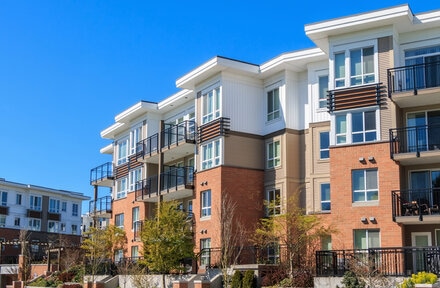
x
Andrew LaSalla
Andrew LaSalla II is one of the most trusted financial consultants in the residential and commercial lending business. With over seven years of of property loan underwriting experience, Andrew's sole focus is helping clients successfully navigate complex financial laws, terms, rules, paperwork, and transactions necessary to secure loans for new construction, purchase, or refinancing of multifamily, healthcare, affordable housing and student housing properties. Whether it's HUD, FHA, or MAP loans, Andrew is committed to tailoring financial solutions for every client he serves.
As of March 2, 2020, applications for refinancing of newly built or substantially rehabilitated properties will now be accepted provided that any project submitted within three years of issuance of the final Certificate of Occupancy.
DSCR Guidelines
The project must meet the minimum DSCR (Debt Service Coverage Ratio) on the newly requested insured loans. The DSCR is 1.17 for market rate projects and 1.11 for projects meeting the definition of Broadly Affordable for a period of not less than one full month. In addition, the property must evidence a minimum applicable DSCR for a period of three consecutive months prior to loan endorsement. Section 223(f) provides FHA mortgage insurance for loans up to a 35-year term that are non-recourse and often with favorable interest rates. Learn more here on how to improve and calculate your DSCR.
Reasons for the New HUD 223 Rules
The program had been modified to facilitate opportunities for borrowers to refinance stabilized properties and to increase the supply of affordable and workforce housing. The policy also applies to mortgage insurance under Section 223(f). This does not include 232 Healthcare facilities.
Underwriting Conditions and Information
- Once the project receives the final Certificate of Occupancy the minimum Debt Service Coverage Ratio (DSCR) of 1.17 for market rate projects and 1.11 for projects meeting the definition of Broadly Affordable for a period of three consecutive months prior to loan endorsement.
- A monthly income and expense statement that starts at initial occupancy to application submission, as well as a proforma monthly projection of income and expense for a twelve-month period.
- A current rent roll reflecting existing achieved rents as well as rent amounts that were used to underwrite the existing first mortgage that you currently have.
- An occupancy history of the project that begins from initial occupancy to application submission, as well as the projected lease up time that was initially used to underwrite the existing first mortgage.
- Rent concessions, discounts, and any leases that are less than twelve months that ownership has given to tenants to induce them into signing a lease must be disclosed and discussed in the Lender's Narrative.
- The project requires that it be underwritten utilizing the actual revenue collected less normalized operating expenses to calculate if the minimum Debt Service Coverage is achieved.
Cash out may be permitted, subject to the LTV limits of the MAP Guide. There will be 50% of the cash out amount that the lender will hold back and release once the project achieves the minimum applicable debt service coverage minimum for a period of six consecutive months. Click here to read Notice H 20-03 in its entirety.”
(Source) U.S. DEPARTMENT OF HOUSING AND URBAN DEVELOPMENT NOTICE H 20-03
If you just completed, or are near completion of a new construction project, a HUD/FHA 223(f) transaction might be the best product when looking to pay off the existing construction loan with a long term (up to 35 years) fully amortized, low rate loan.